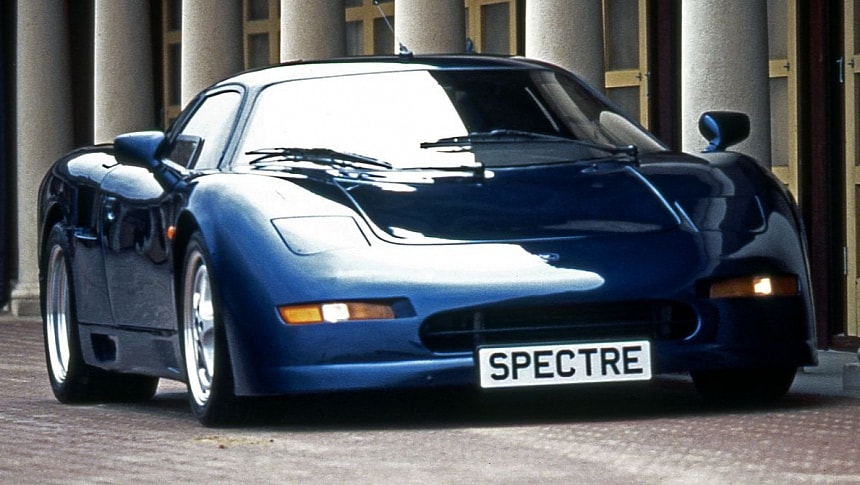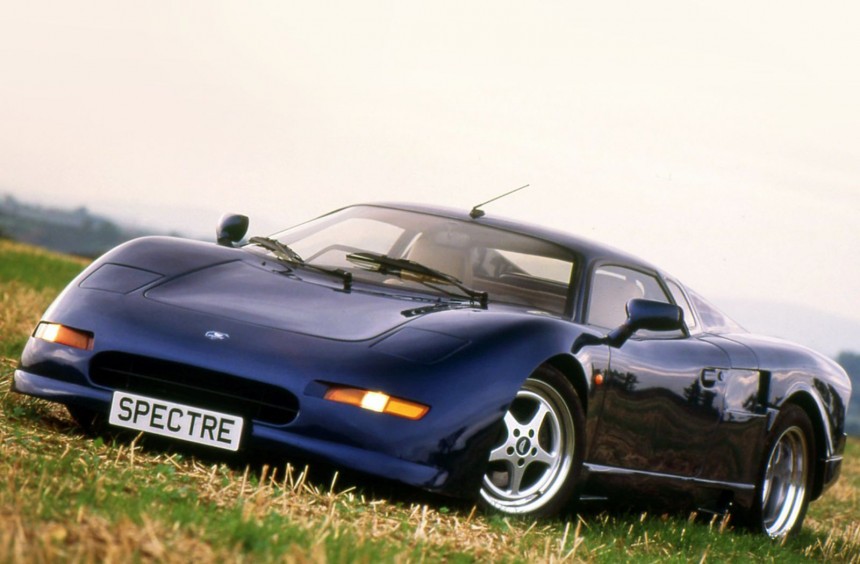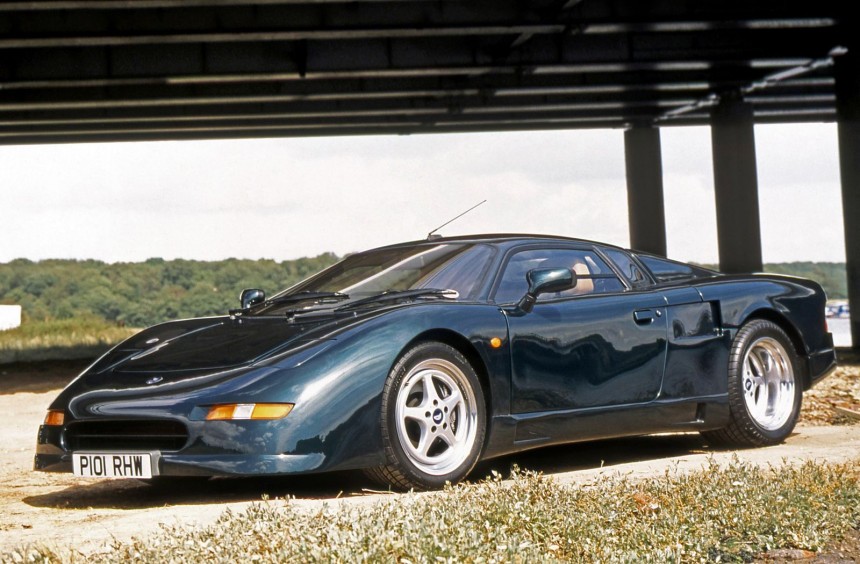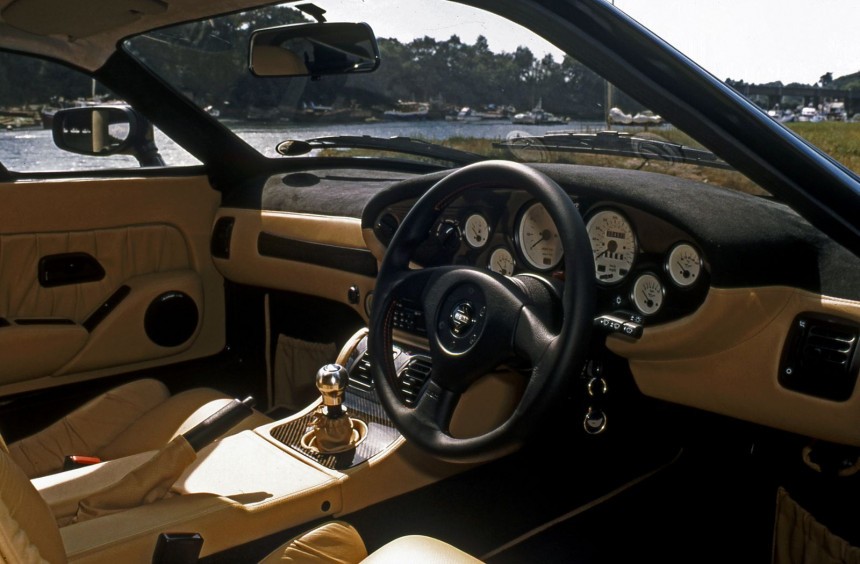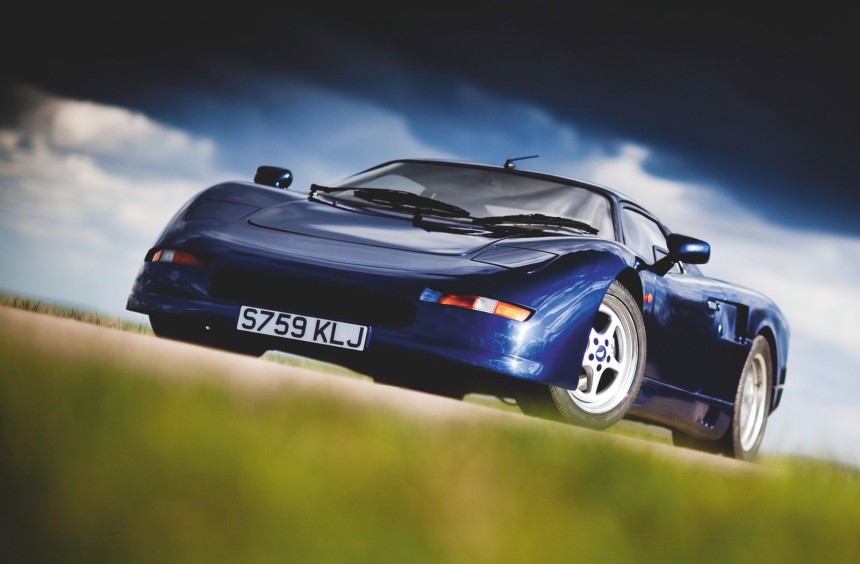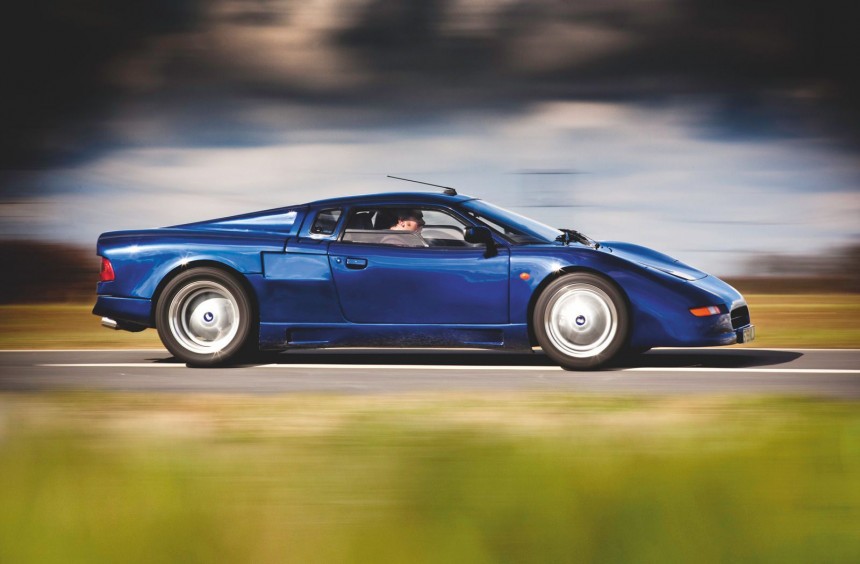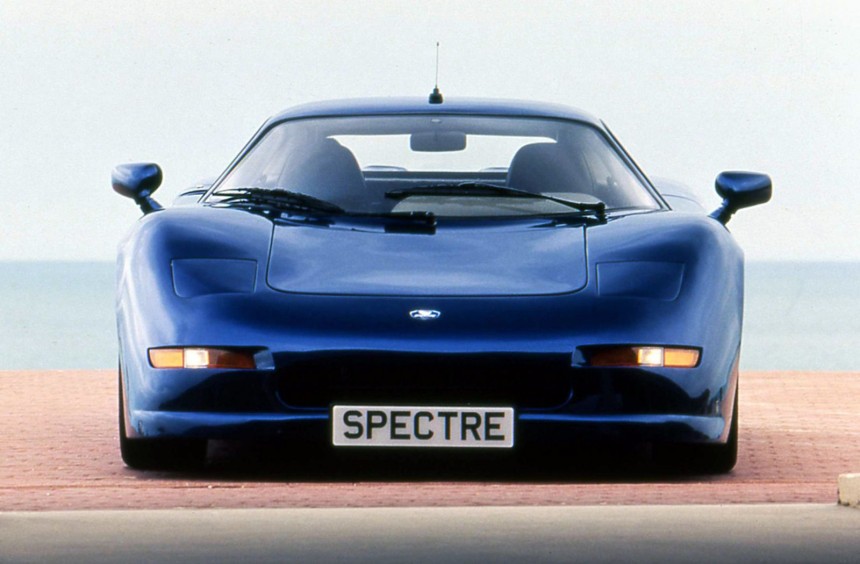Over a decade before Ford launched the production version of the GT, a small British company developed a modern supercar inspired by the legendary GT40.
Though it was developed in the 1960s, the GT40 remains the most famous American-built race car.
Developed with the help of Carroll Shelby, the GT40 ended Ferrari's hegemony in the world of endurance racing in 1966 when not one but three examples finished the 24 Hours of Le Mans first, ahead of the Italian carmaker's prancing horses.
The thoroughly improved Mk IV version of the famous race car defended its Le Mans crown in 1967 thanks to the efforts of the Shelby American crew, then, under John Wyer's stewardship, the revamped Mk I added two more consecutive wins in 1968 and 1969, cementing its place as one of the greatest race cars of all time.
Decades after it was retired, the GT40 continued to inspire automotive designers, engineers, and enthusiasts all over the world.
Until Ford introduced the GT40-inspired GT at the 2002 North American International Auto Show, a supercar that went into production two years later, many have wondered what a modern reinterpretation of the GT40 would look like.
One of the people obsessed with that question was Ray Christopher, a man who made a living by building accurate GT40 replicas through a small company called GT Development.
During the early 1990s, Christopher became determined to answer the question by building a modern GT40 and taking it to Le Mans.
Using his intimate knowledge of the original GT40's design, he sketched out a bespoke chassis and created a scale model that was subsequently wind tunnel tested.
Since Christopher's goal was to create a race car, but the Le Mans homologation requirements of the era required a closely related, street-legal version, the designer began by developing a functional, road-worthy prototype.
Unveiled at the 1993 London Motor Show, the car looked nothing like the original GT40, as Christopher drew inspiration from early-1990s supercars like the Lamborghini Diablo, Ferrari 512TR, Bugatti EB110, or Jaguar XJ220.
However, the aluminum honeycomb monocoque chassis with its steel subframe and rollover bars was, in more ways than one, a modernized rendition of the original GT40.
Named R42, with the two digits symbolizing the height of the car - similar to how the GT40 got its name - the car was met with excitement by the public and the press.
Despite the overwhelmingly positive public reaction, the development costs of the prototype were so high that GT Development was on the brink of bankruptcy, which doomed any plans for series production.
Thankfully, Spectre Motors, an American company led by former GT Development sales agent Anders Hildebrand, came to the rescue and took over the R42 project in 1995.
Spectre also purchased a 12,000 square-foot (1114.8 square-meter) production facility in Poole, a small town located in south-west England, and a few months later, the street-legal R42 went into production, while a Le Mans-focused, endurance racing version dubbed R42 GTR made its debut at the 1996 London Motor Show.
Nearly identical to the prototype, the production version of the R42 featured a bespoke body that looked more Italian than British. However, while the initial plan was to fabricate the structure out of carbon fiber, due to high production costs, the company had to settle for fiberglass.
Its advanced, GT40-inspired chassis featured a race-style independent suspension system with adjustable Spax shocks, while the braking system supplied by AP Racing comprised four-piston calipers that hugged 295-mm (12-inch) discs.
To cater to the affluent car buyer, the R42 received a luxurious interior with electric Recaro seats, adjustable pedals, genuine leather upholstery, and an Alcantara-covered dash.
Though the car was compact, its cabin was sufficiently spacious for two people and delivered the luxury feel that one would expect from a high-end supercar.
In part to honor the supercar's GT40 heritage, but also because it was cheap, Spectre chose to use an American-built Ford powerplant for the project.
Mounted midship, the engine in question was a four-valve DOHC 4.6-liter (281-ci) Modular V8 borrowed from the fourth-generation Mustang Cobra.
However, the engine only received minor improvements, such as a new exhaust system, so its performance didn't improve considerably. From the stock 305 hp and 300 lb-ft (410 Nm) of torque it made in the Cobra's engine bay, the V8 - mated to a Getrag five-speed transaxle in the R42 - was now rated at 350 hp and 317 lb-ft (430 Nm) of torque.
Consequently, the performance figures weren't mind-blowing despite the car's relatively low 3,417-pound (1,550 kg) curb weight.
According to Spectre, the R42 could sprint from 0 to 60 mph (97 kph) in 4.5 seconds and achieve a top speed of 175 mph (282 kph).
In contrast, a 1995 Lamborghini Diablo SV could accelerate to 60 mph nearly a second faster and reach a top speed of 204 mph (328 kph) thanks to its much more powerful V12.
Nevertheless, the R42's forte was the crisp handling, which gained praise from the journalists who got to test it.
The Spectre R42 went into production in 1995, with the first examples making their way to wealthy collectors from Switzerland.
However, owners soon started complaining about poor fit and finish issues with the fiberglass body.
To make matters worse, the car gained largely negative reviews for the aforementioned issues, as well as for utilizing components from plebian mass-produced cars, such as Toyota MR2 front indicators and door handle, Honda Legend tail lamps, or Ford Fiesta air conditioning unit and vents.
By 1996, Spectre only managed to sell 23 units, far less than it intended, so the company decided to end production and focus on an improved successor.
Unfortunately, the new R45 project was canned after two prototypes were built, and the R42 GTR race program was canceled before the car entered a race.
Despite failing to live up to the expectations, the Spectre R42 was an imperfect supercar that hid a near-flawless chassis underneath. Thanks to its GT40 roots, it delivered a grossly underrated driving experience that could rival much more powerful contemporary supercars.
For a retro review of this forgotten machine, we recommend watching the YouTube video below by stuff2share.
Developed with the help of Carroll Shelby, the GT40 ended Ferrari's hegemony in the world of endurance racing in 1966 when not one but three examples finished the 24 Hours of Le Mans first, ahead of the Italian carmaker's prancing horses.
The thoroughly improved Mk IV version of the famous race car defended its Le Mans crown in 1967 thanks to the efforts of the Shelby American crew, then, under John Wyer's stewardship, the revamped Mk I added two more consecutive wins in 1968 and 1969, cementing its place as one of the greatest race cars of all time.
Decades after it was retired, the GT40 continued to inspire automotive designers, engineers, and enthusiasts all over the world.
Until Ford introduced the GT40-inspired GT at the 2002 North American International Auto Show, a supercar that went into production two years later, many have wondered what a modern reinterpretation of the GT40 would look like.
From GT40 replicas to a bespoke, GT40-inspired supercar
During the early 1990s, Christopher became determined to answer the question by building a modern GT40 and taking it to Le Mans.
Using his intimate knowledge of the original GT40's design, he sketched out a bespoke chassis and created a scale model that was subsequently wind tunnel tested.
A promising prototype
Unveiled at the 1993 London Motor Show, the car looked nothing like the original GT40, as Christopher drew inspiration from early-1990s supercars like the Lamborghini Diablo, Ferrari 512TR, Bugatti EB110, or Jaguar XJ220.
However, the aluminum honeycomb monocoque chassis with its steel subframe and rollover bars was, in more ways than one, a modernized rendition of the original GT40.
Named R42, with the two digits symbolizing the height of the car - similar to how the GT40 got its name - the car was met with excitement by the public and the press.
It almost didn't make it
Thankfully, Spectre Motors, an American company led by former GT Development sales agent Anders Hildebrand, came to the rescue and took over the R42 project in 1995.
Spectre also purchased a 12,000 square-foot (1114.8 square-meter) production facility in Poole, a small town located in south-west England, and a few months later, the street-legal R42 went into production, while a Le Mans-focused, endurance racing version dubbed R42 GTR made its debut at the 1996 London Motor Show.
The production version
Its advanced, GT40-inspired chassis featured a race-style independent suspension system with adjustable Spax shocks, while the braking system supplied by AP Racing comprised four-piston calipers that hugged 295-mm (12-inch) discs.
To cater to the affluent car buyer, the R42 received a luxurious interior with electric Recaro seats, adjustable pedals, genuine leather upholstery, and an Alcantara-covered dash.
Though the car was compact, its cabin was sufficiently spacious for two people and delivered the luxury feel that one would expect from a high-end supercar.
American V8 power but less-than-impressive performance figures
Mounted midship, the engine in question was a four-valve DOHC 4.6-liter (281-ci) Modular V8 borrowed from the fourth-generation Mustang Cobra.
However, the engine only received minor improvements, such as a new exhaust system, so its performance didn't improve considerably. From the stock 305 hp and 300 lb-ft (410 Nm) of torque it made in the Cobra's engine bay, the V8 - mated to a Getrag five-speed transaxle in the R42 - was now rated at 350 hp and 317 lb-ft (430 Nm) of torque.
Consequently, the performance figures weren't mind-blowing despite the car's relatively low 3,417-pound (1,550 kg) curb weight.
According to Spectre, the R42 could sprint from 0 to 60 mph (97 kph) in 4.5 seconds and achieve a top speed of 175 mph (282 kph).
In contrast, a 1995 Lamborghini Diablo SV could accelerate to 60 mph nearly a second faster and reach a top speed of 204 mph (328 kph) thanks to its much more powerful V12.
Nevertheless, the R42's forte was the crisp handling, which gained praise from the journalists who got to test it.
The downfall
However, owners soon started complaining about poor fit and finish issues with the fiberglass body.
To make matters worse, the car gained largely negative reviews for the aforementioned issues, as well as for utilizing components from plebian mass-produced cars, such as Toyota MR2 front indicators and door handle, Honda Legend tail lamps, or Ford Fiesta air conditioning unit and vents.
By 1996, Spectre only managed to sell 23 units, far less than it intended, so the company decided to end production and focus on an improved successor.
Unfortunately, the new R45 project was canned after two prototypes were built, and the R42 GTR race program was canceled before the car entered a race.
Despite failing to live up to the expectations, the Spectre R42 was an imperfect supercar that hid a near-flawless chassis underneath. Thanks to its GT40 roots, it delivered a grossly underrated driving experience that could rival much more powerful contemporary supercars.
For a retro review of this forgotten machine, we recommend watching the YouTube video below by stuff2share.
